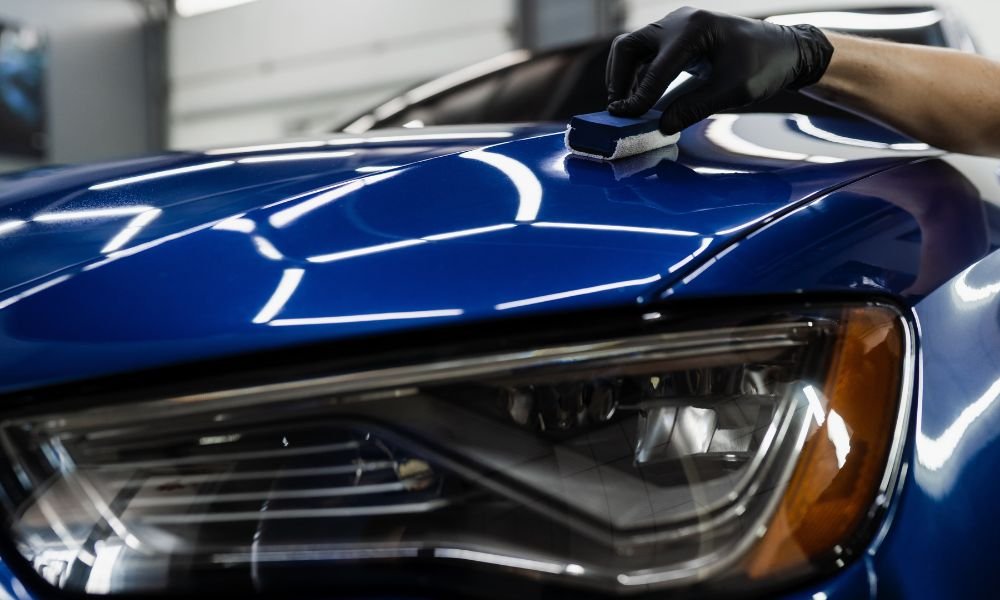A Comprehensive Overview to the Sorts Of Ceramic Layer on the marketplace
Ceramic layers have arised as a critical remedy across different markets as a result of their distinct residential properties and applications. From silica-based formulations understood for their toughness to crossbreed options that merge numerous benefits, the choices offered can be frustrating. Comprehending the subtleties of each kind, including their certain benefits and optimal usage instances, is crucial for making notified choices. As we explore the distinctive attributes and applications of these coverings, the ramifications for efficiency and longevity end up being significantly noticeable, questioning concerning which kind may finest suit your requirements.
Understanding Ceramic Coatings
Ceramic finishings are sophisticated protective services that have actually gained appeal in numerous sectors, especially in automobile and aerospace applications. These finishings contain a liquid polymer that, when cured, forms a sturdy, hydrophobic layer on the surface of the substratum. This layer gives boosted resistance to environmental contaminants, UV radiation, and chemical exposure, therefore expanding the life and visual appeal of the underlying product.
The basic element of ceramic finishings is silica, which adds to their solidity and longevity. The application procedure commonly entails surface prep work, application of the finish, and curing, which can be achieved with heat or UV light. As soon as treated, ceramic coverings show remarkable bonding residential properties, permitting them to stick highly to a range of surface areas, including steels, plastics, and glass.
Along with their protective attributes, ceramic finishings also use ease of upkeep. Their hydrophobic nature minimizes the adherence of dirt and gunk, making cleansing easier and much less frequent. On the whole, the adoption of ceramic layers represents a significant development in surface area protection modern technology, offering both practical and aesthetic benefits throughout multiple fields.
Sorts Of Ceramic Coatings
Numerous kinds of ceramic coatings are available, each created to meet certain efficiency needs and applications - scratch repair sarasota. One of the most usual types include:
Silica-based Coatings: These coverings mainly contain silicon dioxide and are recognized for their toughness and chemical resistance. They are extensively used in automobile and commercial applications.
Titanium Dioxide Coatings: Distinguished for their photocatalytic properties, titanium dioxide layers are frequently applied in environments where self-cleaning and antifungal properties are preferable, such as in structure materials and automotive surfaces.
Zirconia Coatings: Defined by their high-temperature stability and thermal resistance, zirconia coverings are used in applications such as turbine engines and high-performance automotive elements.
Alumina Coatings: Exhibiting outstanding firmness and thermal security, alumina finishes are often used in wear-resistant applications, consisting of reducing tools and industrial equipment. - Paint Protection Film
Hybrid Coatings: Combining the residential or commercial properties of various products, crossbreed layers use enhanced efficiency qualities, making them suitable for one-of-a-kind and requiring applications.
Each type of ceramic layer serves distinctive objectives, enabling customers to choose one of the most suitable solution based on particular ecological conditions and efficiency demands.
Advantages of Ceramic Coatings
Ceramic finishings, in certain, offer countless advantages that make them progressively popular among makers and customers alike. These layers are resistant to scrapes, chemicals, and UV rays, guaranteeing that the underlying surface area stays secured over time.
Along with toughness, ceramic layers provide outstanding hydrophobic properties, allowing for very easy cleansing and upkeep. This water-repellent nature minimizes the adherence of dirt, grime, and various other impurities, which can extend the visual charm and performance of the surface area. Ceramic coatings can significantly boost thermal resistance, making them optimal for applications that sustain high temperatures.

Application Refine
When applying ceramic layers, a careful approach is essential to accomplish optimal results. A tidy surface area guarantees proper bond of the layer.
Once the redirected here surface area is prepped, the following action is to use the ceramic finishing. This can be done making use of an applicator pad or a microfiber cloth, making certain also coverage. It is vital to function in small sections to preserve control and prevent premature healing. The coating ought to be applied in slim layers, as thicker applications can bring about irregular finishes.
After application, the finishing needs a specific curing time, normally ranging from a couple of hours to a complete day, depending on the item. During this moment, it is crucial to prevent direct exposure to wetness or impurities. A mild buffing might be essential after healing to boost the gloss and get rid of any type of high areas. Adhering to these steps diligently will take full advantage of the efficiency and durability of the ceramic finishing, supplying a resilient safety layer for the surface.
Maintenance and Long Life
To ensure the durability and effectiveness of a ceramic coating, routine maintenance is necessary. Ceramic finishes, known for their durability and protective top qualities, need certain care regimens to optimize their life-span and performance. The initial step in upkeep involves routine washing with pH-neutral soap, preventing harsh chemicals that can weaken the finishing. It is a good idea to clean the automobile consistently, ideally every two weeks, to avoid the buildup of pollutants that can jeopardize the covering's honesty.
Along with regular washing, regular examinations are vital. Look for signs of wear or damage, such as hydrophobic residential or commercial properties reducing or surface area imperfections. If required, a light polish may be used to renew the covering without removing it away.
Furthermore, the application of a booster spray can boost the finish's hydrophobic results and recover its gloss. This is especially helpful for finishes that have actually been in usage for an extensive period. Inevitably, by adhering to these upkeep techniques, one can dramatically prolong the life of a ceramic layer, ensuring that it proceeds to give optimum defense versus environmental aspects and keep the aesthetic allure of the automobile.
Conclusion
